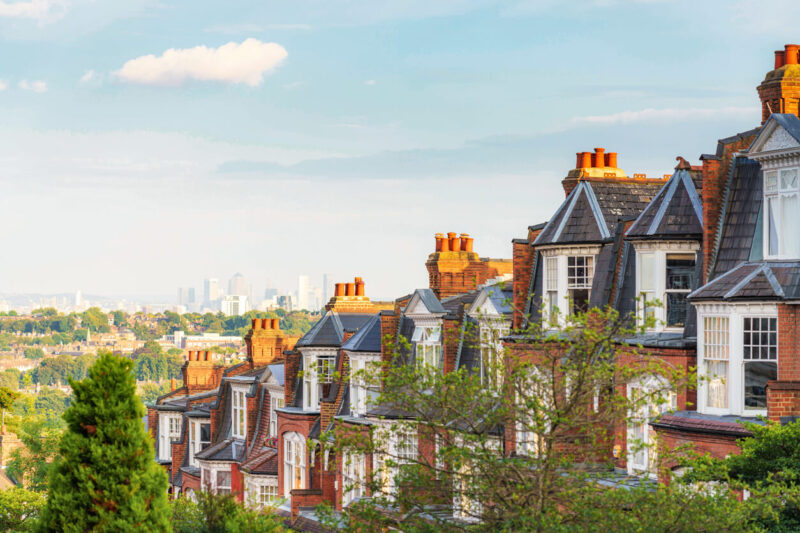When it comes to property, location is often cited as the most critical factor influencing value. In a bustling metropolis like London, this adage holds particularly true.
With its diverse neighbourhoods, each offering unique characteristics and amenities, understanding how location impacts house valuation London can help buyers, sellers, and investors make informed decisions. This guide explores the various aspects of location that affect property values in the capital.
1. Transport Links and Accessibility

One of the primary factors influencing house prices in London is accessibility to transport links. Proximity to Tube stations, bus routes, and rail services can significantly enhance a property’s appeal. Areas that are well-connected to central London tend to attract higher valuations. For instance, properties in zones 1 and 2, which are close to the heart of the city, generally command premium prices due to the convenience of commuting.
Furthermore, recent infrastructure projects, such as the expansion of the Elizabeth Line, have positively impacted house prices in surrounding areas. Buyers are increasingly looking for locations that not only offer easy access to their workplaces but also provide quick routes to leisure and cultural destinations.
2. Local Amenities
The availability of local amenities, such as schools, parks, shops, and healthcare facilities, plays a significant role in house valuation. Families, in particular, prioritise access to good schools, which can drive up demand and prices in certain areas. London boasts a range of outstanding educational institutions, from primary schools to renowned secondary schools, which can make nearby properties more attractive.
Parks and recreational spaces also contribute to higher valuations. Areas like Kensington and Chelsea, which are home to several green spaces, command higher prices due to the lifestyle they offer. Access to shops, restaurants, and entertainment venues can further enhance a location’s desirability, leading to increased property values.
3. Safety and Community
Safety is a paramount concern for many homebuyers. Areas with low crime rates and a strong sense of community are often more appealing, leading to higher valuations. Local authorities in London work to improve safety and community engagement, which can positively influence house prices over time.
Neighbourhood reputation plays a crucial role as well. Some areas may undergo gentrification, where an influx of higher-income residents leads to improvements in infrastructure, services, and safety. While this can increase property values, it can also change the character of the neighbourhood, affecting current residents.
4. Cultural and Historical Significance

London is rich in history and culture, and properties in areas with historical significance often enjoy higher valuations. London has many villages and locations with colourful streets and historic architecture which attract buyers looking for character and charm. Similarly, areas with cultural landmarks, theatres, and museums are in high demand.
Historic properties or those located in conservation areas may also have added appeal, as buyers often seek the uniqueness and heritage these homes offer. Such factors can create a competitive market, pushing up house prices in these sought-after locales.
5. Market Trends and Economic Factors
The broader economic climate and market trends also affect house valuations. London’s property market is influenced by factors such as interest rates, government policies, and overall economic health. For instance, changes in stamp duty or initiatives to boost affordable housing can impact demand in specific areas, thereby affecting house prices.
Additionally, global economic conditions can play a role. London is a hub for international investors, and fluctuations in foreign investment can lead to changes in property values. Understanding these trends is crucial for anyone looking to buy or sell property in London.
6. Future Development Potential

The potential for future development is another critical factor in house valuation. Areas earmarked for regeneration or infrastructure improvements may see a rise in property values as investment flows into the region. For example, the redevelopment of areas like Battersea Power Station has transformed the local landscape, leading to increased demand and rising prices.
Buyers and investors should consider the long-term vision for an area when evaluating a property’s potential. Researching planned developments can provide insight into how values may shift in the coming years.
Conclusion
In summary, the impact of location on house valuation in London is multifaceted and dynamic. Factors such as transport links, local amenities, safety, cultural significance, market trends, and future development potential all play critical roles in determining property values. For anyone looking to navigate the London property market, understanding these elements can provide a significant advantage, whether you’re buying, selling, or investing. By focusing on location, you can make informed decisions that align with your financial goals and lifestyle preferences.


